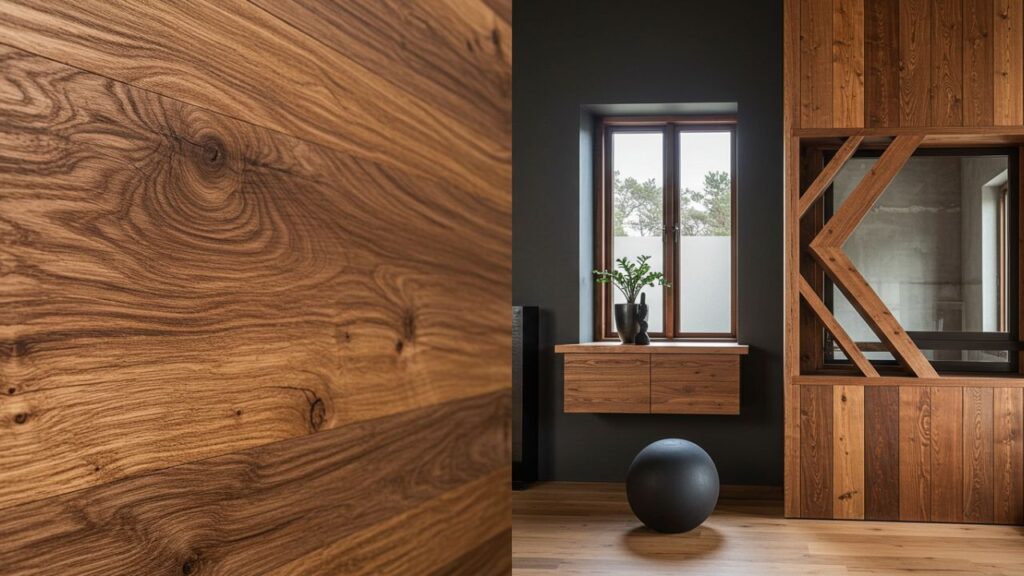Bardoek wood has become one of the most respected hardwoods in the global timber market. Known for its natural strength and rich reddish-brown tones, it is prized for use in flooring, furniture, and construction. As homeowners and builders look for long-lasting and sustainable materials, bardoek continues to stand out as a top choice.
This guide explores the properties, applications, and sustainability of bardoek wood, offering insights for anyone considering it for projects.
Bardoek Wood Origins and Background
Bardoek wood, often referred to as Merbau in some regions, is native to Southeast Asia and the Pacific islands. It thrives in tropical climates and has been used for centuries in traditional construction and furniture making.
Its reputation stems from its ability to withstand heavy use while retaining its natural beauty. Today, it remains a popular hardwood not only in its native regions but also in international markets.
Bardoek Wood Properties
The unique properties of bardoek wood are what make it so desirable:
-
Durability: Naturally resistant to decay, pests, and termites.
-
Density: High density makes it tough against scratches and dents.
-
Color and Grain: Reddish-brown shades with interlocked grain patterns.
-
Moisture Resistance: Natural oils help it withstand humid environments.
These characteristics place bardoek wood among the strongest and most versatile tropical hardwoods available.
Bardoek Wood in Furniture
Bardoek wood is widely used in furniture due to its impressive durability. Tables, chairs, and cabinets made from this material often last for decades.
Its interlocked grain patterns create unique aesthetics that require little finishing. Craftsmen appreciate its natural polish, while homeowners enjoy furniture that resists warping and maintains beauty over time.
Family heirloom-quality pieces are commonly made from bardoek, as the wood can withstand daily wear without losing integrity.
Bardoek Wood in Flooring
One of the most common modern uses of bardoek wood is flooring. Its density makes it resistant to dents, scratches, and heavy foot traffic.
The warm tones of bardoek flooring add elegance and comfort to interiors. Over the years, it develops a deeper patina that enhances its appeal. For busy homes or commercial spaces, bardoek flooring provides both practicality and timeless beauty.
Outdoor Applications of Bardoek
Because of its resistance to weather and pests, bardoek wood is excellent for outdoor use. Decking, patios, pergolas, and garden furniture are frequently made from this hardwood.
Its natural oils help protect against moisture, making it more durable in humid or rainy climates. Occasional sealing can extend its life even further, ensuring outdoor projects remain strong and attractive.
Comparing Bardoek with Other Hardwoods
When comparing bardoek to other hardwoods, several advantages stand out:
-
Versus Pine: Stronger, more durable, and resistant to pests.
-
Versus Teak: Similar in durability but often more affordable.
-
Versus Oak: Better suited to tropical climates due to moisture resistance.
These comparisons highlight why bardoek is often chosen for demanding projects where long life and resilience are required.
Sustainability of Bardoek Wood
Sustainability is a growing priority in the construction and furniture industries. Responsible sourcing of bardoek wood ensures forests remain preserved while consumers enjoy its benefits.
Many suppliers now offer certified bardoek timber from managed forests. Choosing certified wood supports environmental protection and promotes ethical forestry practices.
For eco-conscious homeowners, this makes bardoek a responsible yet stylish choice.
Care and Maintenance of Bardoek
Maintaining bardoek wood is straightforward. For furniture, regular dusting and occasional polishing enhance its natural shine. Flooring requires sweeping and mopping with a damp cloth to keep it clean.
Outdoor furniture or decking should be washed periodically and resealed every few years. Avoid harsh cleaners, which can strip natural oils. With proper care, bardoekwood remains strong and beautiful for decades.
Modern Design Trends with Bardoek
Modern designers are using bardoekwood in innovative ways. Its deep tones pair well with minimalist and contemporary aesthetics. Flooring, wall cladding, and custom-built furniture are all trending applications.
Architects also appreciate bardoek for sustainable building designs, as its strength and natural resistance make it ideal for eco-friendly projects.
Challenges with Bardoek
Despite its advantages, bardoekwood has challenges. Its density makes it more difficult to cut and shape, requiring professional tools.
Additionally, being a heavy wood, shipping costs can be higher compared to lighter timbers. Consumers must also remain aware of uncertified sources to avoid contributing to deforestation.
Future of Bardoek Wood
The future looks bright for bardoekwood, especially as sustainable practices become more widespread. With more awareness about eco-friendly choices, responsibly sourced bardoek is expected to grow in demand.
Its combination of strength, beauty, and eco-friendliness positions it as a key material in modern construction and design.
Conclusion
Bardoek wood is a durable, versatile, and elegant hardwood that has stood the test of time. From flooring and furniture to outdoor structures, it offers unmatched strength and beauty.
By choosing sustainably sourced bardoek, homeowners and builders can enjoy its many benefits without harming the environment. As demand grows for long-lasting and eco-friendly materials, bardoek will continue to shine as a reliable and stylish choice.





